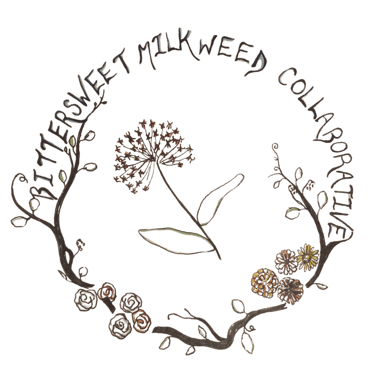Restoring Regional Roots
From 1950 to 1970, Fred Ashworth, a plant breeder from De Peyster, collaborated with Cornell Cooperative Extension to develop a dozen potato varieties, many of which were blight-resistant. Unfortunately, over time, all but six of these potato varieties were lost.
We are partnering with Bill and Diana MacKentley, Seed Savers Exchange, Cultivariable, and dedicated seed keepers to revive and popularize these special spuds.
The seedstock has faced disease challenges and requires a thorough cleaning, regrowth as germplasm, and cultivation as minitubers. This process spans multiple years and demands patience, love, determination, and hope.
Presently, we are cultivating the Ashworth and CDF9 varieties on our farm, while fellow seed keepers are diligently working to rid them of viruses. With dedication and a touch of harmony, these unique potatoes will soon be available to those living in Fred's hometown.
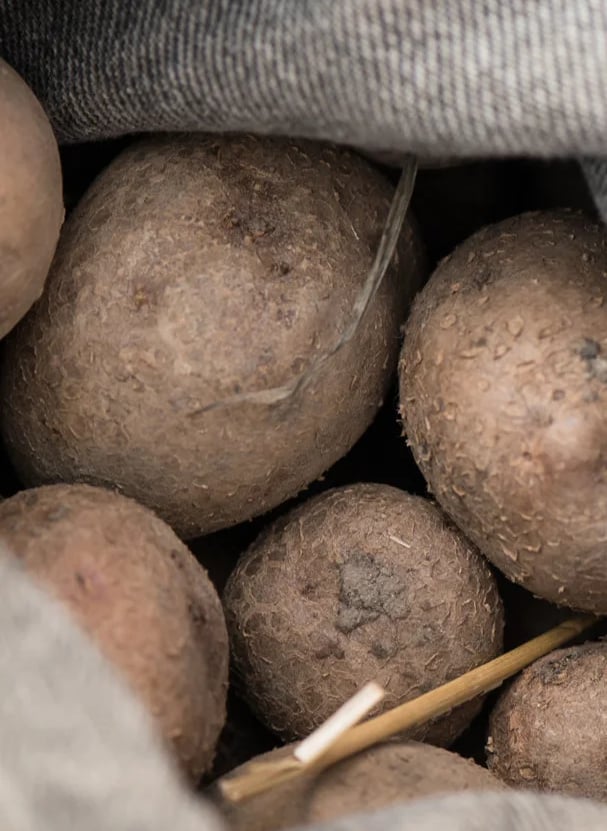

Native Neighbors
As much as we love a good spud, we recognize that they're from the Andes Mountains, thousands of miles and a completely different ecosystem away. As such, we are establishing plots of native root and tuber crops.
Many of these plants are endangered due to overharvesting and the destruction of their homes. In offering them a safe place to grow, we encourage the thriving of our ecosystem, learn about their culture and diversify our harvest. These plants are resilient perennials, providing food and medicine even as climate change hits us.
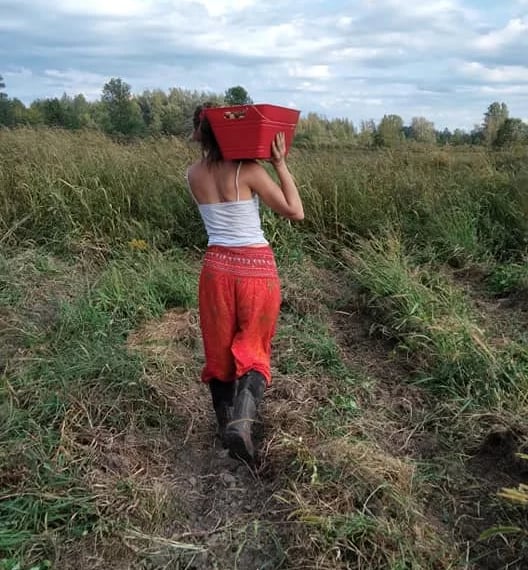

Sunchokes/Ohnenna'tahtsi
The Mohawk name for these prolific producers means, 'all of a sudden there were potatoes...an excessive amount of potatoes... potatoes everywhere!' Also known as Jerusalem Artichokes, these sunflower cousins can grow upwards of 12 feet. Edible both raw and cooked, these nutty, versatile perennials are sorely underappreciated. They are a suitable potato replacement for those with diabetes and can be stir-fried, boiled, thrown in soup or munched on. They grow with ease and bloom in glorious yellow late into Autumn weather.
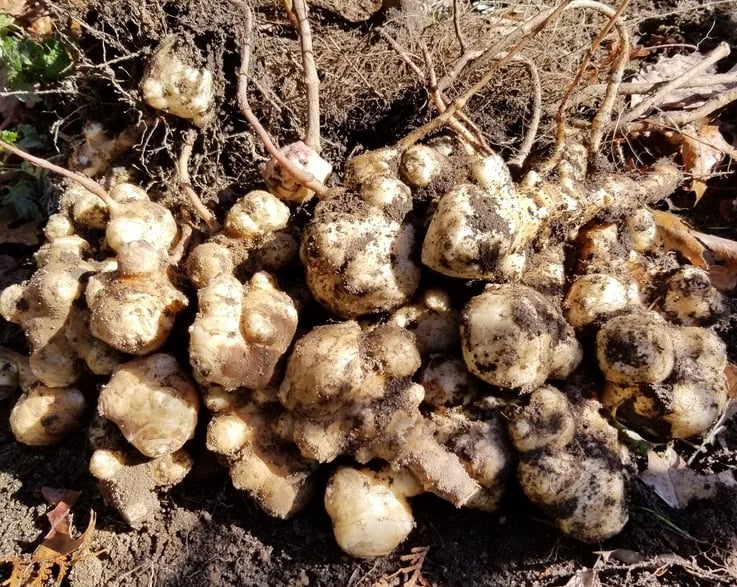

Wild Ginger
An unusual member of the birthwort family, wild ginger root is unrelated to the Chinese ginger found in grocery stores. These plants carry a similar pungency and warm flavor, however, and historically the roots are candied. Their broad leaves and rhizomatous spreading means they are also a wonderful forest ground cover.
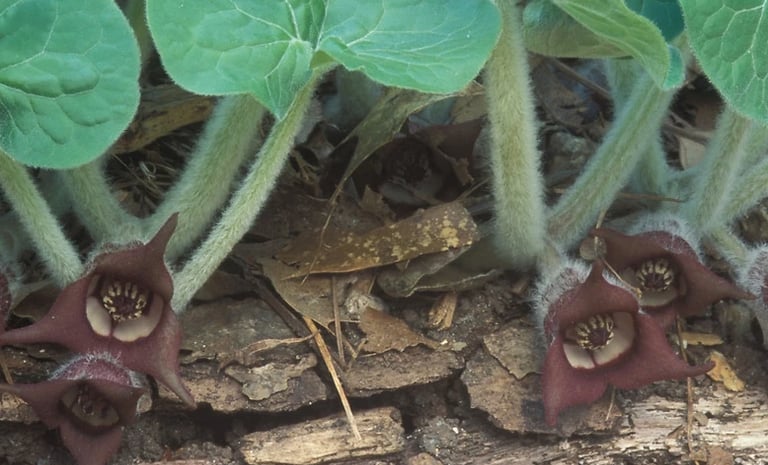

Solomon's Seal
These hardy perennials produce white bell flowers beloved by the local hummingbirds. Growing well in a variety of conditions, they also can be prepared in a variety of dishes. The sprouts are similar to asparagus, and can also be tossed in a salad. The rootstock, which is the part we focus on, is scrubbed, cubed and boiled just like a potato. A great alternative to spuds during rapid climate change!
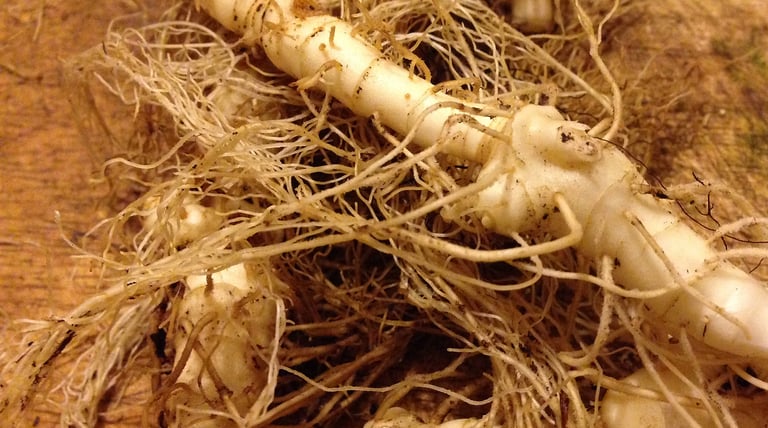

Rejuvenating The Rare
We love the oddball varieties, and don't want them to be forgotten. Right now, we are growing out Garnet Chili, Seneca Horn, Spaulding Rose and Makah Ozette potatoes.
In 1837, Reverend Goodrich of Utica, New York, invested $200 dollars and 16 years to find a hardy potato that would thrive in New England’s growing conditions. By 1853, the Garnet Chili Potato was the winner in hardiness, prolific growth and disease resistance. DNA fingerprinting shows that this rosy spud is the mother of 150 potato varieties - most famously, the Russets. Spaulding Rose is one of the first daughter potatoes to have come from the Garnets. Slightly more well-known, they are larger than their mother and just as schnazz. The Makah Ozette and Seneca Horn are two unique taters who made their way to North America from the Andes hundreds of years ago, and are now facing the struggles of climate change and cultural genocide. These varieties are grown primarily by the Makah and Seneca tribes, and both are listed on the Slow Food Ark of Taste.
